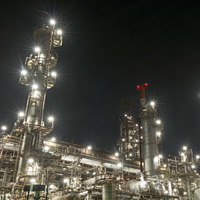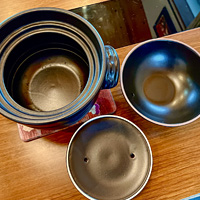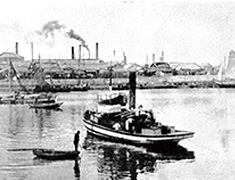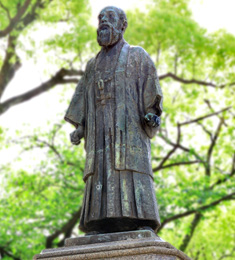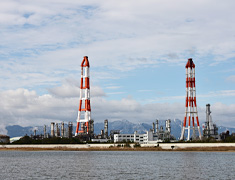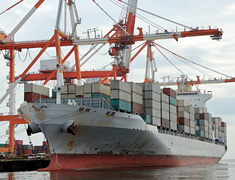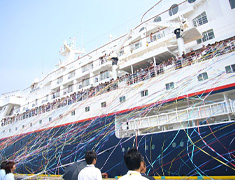Yokkaichi Introduction.
Yokkaichi, located in northern Mie Prefecture, is blessed with a good natural harbour and prospered as an inn town during the Edo period. The name of the city derives from the fact that the market stood on days with the number '4'.
After the war, an industrial complex was formed around the port of Yokkaichi, and in recent years the city has developed into the largest and most populous town in Mie Prefecture with a diverse range of companies. The complex is transformed into a fantastic look at night by the light effects, attracting attention from fans of night views of factories.
The city is also known for its Yokkaichi Banko-yaki pottery, represented by earthenware pots and teapots, and its Kabusecha tea, the largest producer of which in Japan.
Introduction Video(3:36/44.3MB)
Introduction Video(3:36/24.2MB)
What is the Port of Yokkaichi?
- From the end of the Edo period to the early
-
Meiji period Yokkaichi Port was the largest commercial port in Ise Bay, with a thriving trade of ships, passengers and goods. The port of Yokkaichi was developed dramatically with the opening of a regular shipping route between Yokkaichi and Tokyo in 1870 (Meiji 3). However, a number of vessels were transferred to other ports due to damage caused by two earthquakes in 1854 and subsequent tidal surges.
Inaba San'emon, who was running a shipping agent at the time, gave away his personal fortune to undertake the renovation work. After difficult construction work, the present Old Port was completed in 1884, laying the foundations for the modern port. Since then, ship traffic has increased and the port was designated as an open port in 1899 (Meiji 32), eight years earlier than the Port of Nagoya, which is also in Ise Bay. When the port first opened, trade at the port of Yokkaichi centred on imports of foodstuffs and fertilisers, but later cotton imports began and the port became a vibrant import port for textile raw materials.
- postwar period
-
Wool imports have grown substantially, while crude oil has overtaken them as petrochemical complexes have been located. The port of Yokkaichi has developed into a typical industrial port. In the 1950s, Japan's first large-scale petrochemical complex was established in the Shiohama area, and Yokkaichi Port has since been home to three petrochemical complexes.
- Present
-
The Port of Yokkaichi is a major import base for crude oil, LNG (liquefied natural gas) and coal in Japan, and is also a firm export base for automobiles, petrochemicals and other products. The port has also continued to develop as a containerised port. Cruise ships call mainly in the Yokkaichi area (Chitose-cho), while larger ships over 250 m in length call in the Kasumigaura area (Kasumi).
Yokkaichi port and city centre


